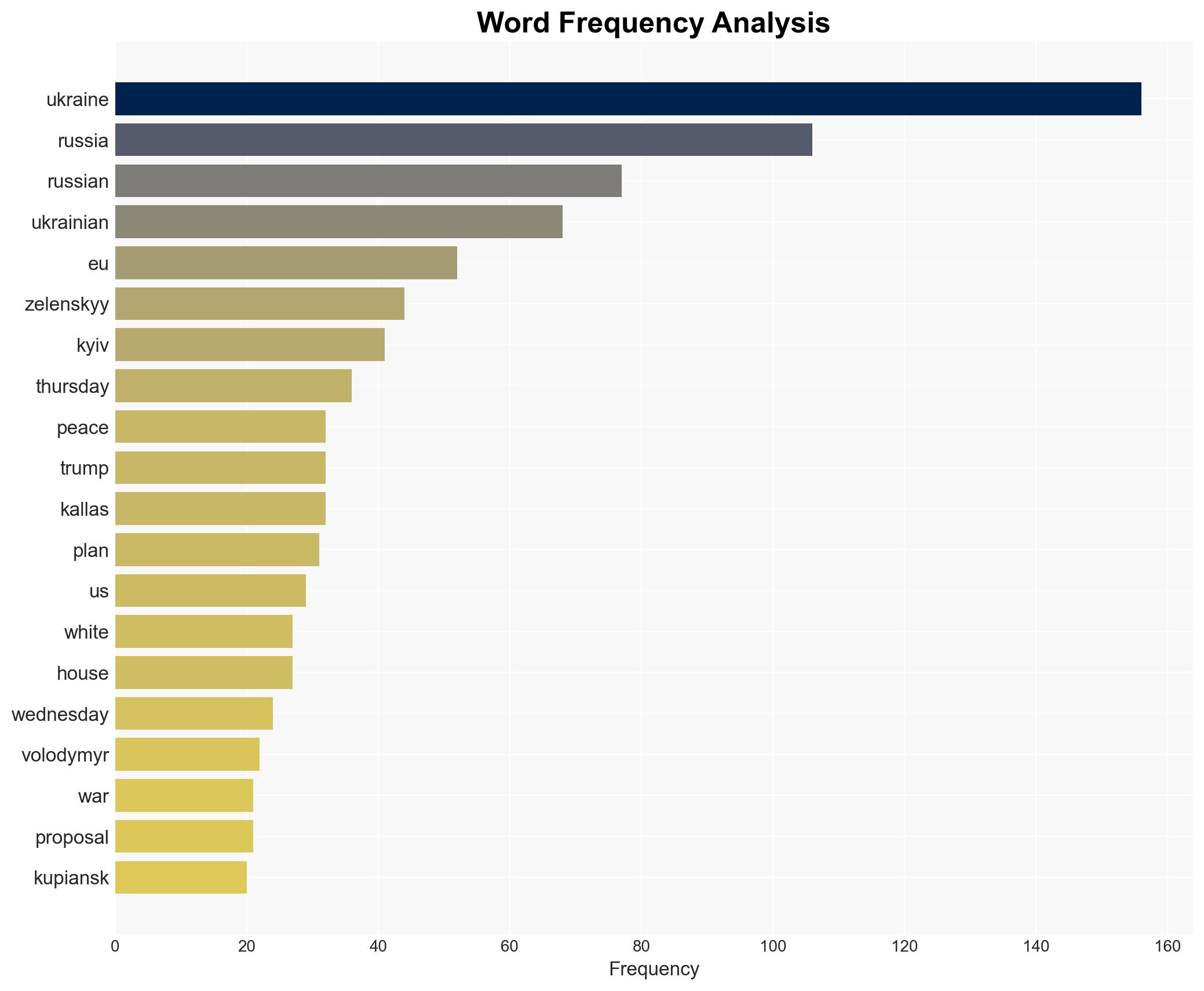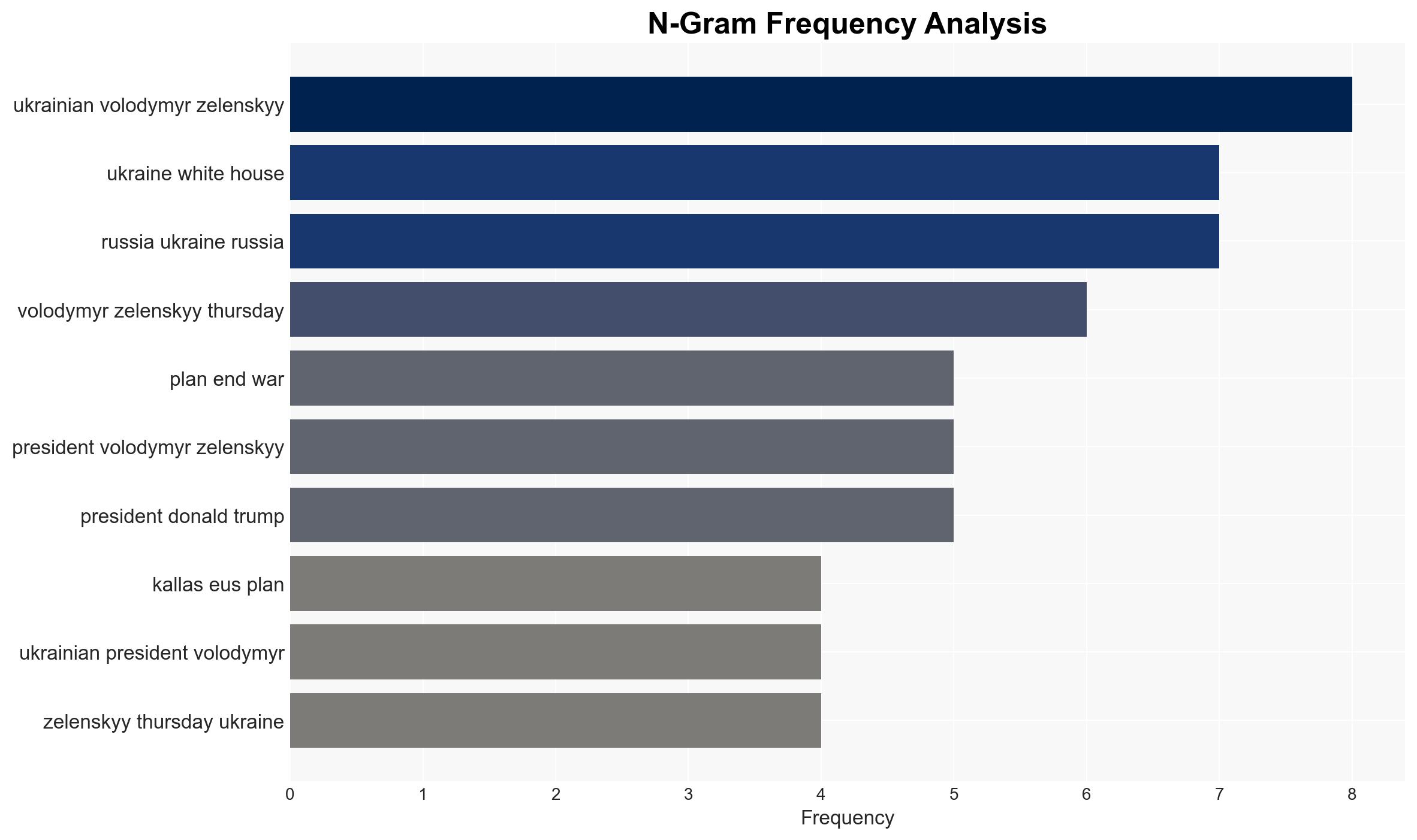Ukraine updates Trump reportedly backs new peace proposal – DW (English)
Published on: 2025-11-20
AI-powered OSINT brief from verified open sources. Automated NLP signal extraction with human verification. See our Methodology and Why WorldWideWatchers.
Intelligence Report:
1. BLUF (Bottom Line Up Front)
With a moderate confidence level, the most supported hypothesis is that the US-Russia peace proposal, backed by former President Donald Trump, is an attempt to initiate a ceasefire and negotiate territorial concessions. This proposal could potentially weaken Ukraine’s strategic position if not carefully managed. Recommended action is for Ukraine and its allies to ensure EU involvement and maintain a unified front to safeguard Ukrainian sovereignty and territorial integrity.
2. Competing Hypotheses
Hypothesis 1: The US-Russia peace proposal is a genuine attempt to end the conflict with a balanced approach that considers both Ukrainian and Russian interests. This hypothesis is supported by the involvement of high-level US officials and the proposal’s backing by Trump, suggesting a serious diplomatic effort.
Hypothesis 2: The proposal is primarily a strategic maneuver by Russia, potentially facilitated by Trump, to gain territorial concessions and weaken Ukraine’s negotiating position. This is supported by the reported demands for Ukraine to cede land and reduce its military, which aligns with Russian interests.
The second hypothesis is more likely given the historical context of Russian territorial ambitions and the proposal’s alignment with Russian strategic goals.
3. Key Assumptions and Red Flags
Assumptions: It is assumed that the US has a coherent strategy that aligns with Ukrainian interests and that the EU will be able to exert significant influence on the peace process.
Red Flags: The lack of explicit EU involvement in the initial proposal is a red flag, as is the potential for Trump to prioritize US-Russia relations over Ukrainian sovereignty. Additionally, the timing of the proposal amidst ongoing military operations raises concerns about its sincerity.
4. Implications and Strategic Risks
The proposal could lead to significant political risks, including a potential split between the US and EU on the approach to the conflict. Economically, any territorial concessions could undermine Ukraine’s resource base. Informationally, the proposal could be used by Russia to sow discord among Western allies. Cyber threats may increase as Russia seeks to exploit divisions and influence public opinion.
5. Recommendations and Outlook
- Actionable Steps: Ukraine should insist on EU involvement in negotiations and maintain a strong diplomatic stance. Allies should coordinate to present a unified front.
- Best Scenario: A balanced peace agreement is reached with full EU involvement, preserving Ukrainian sovereignty.
- Worst Scenario: Ukraine is forced into unfavorable concessions, weakening its strategic position and emboldening Russian aggression.
- Most-likely Scenario: Prolonged negotiations with intermittent ceasefires, with continued pressure on Ukraine to make concessions.
6. Key Individuals and Entities
Volodymyr Zelenskyy, Donald Trump, Kaja Kallas, Arseniy Yatsenyuk, Sergei Kuzovlev, Valery Gerasimov, Dmitry Peskov.
7. Thematic Tags
Structured Analytic Techniques Applied
- Cognitive Bias Stress Test: Expose and correct potential biases in assessments through red-teaming and structured challenge.
- Bayesian Scenario Modeling: Use probabilistic forecasting for conflict trajectories or escalation likelihood.
- Network Influence Mapping: Map relationships between state and non-state actors for impact estimation.
Explore more:
National Security Threats Briefs ·
Daily Summary ·
Support us





